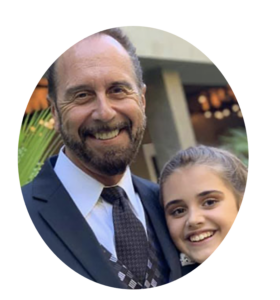 I was 10 years old when I knew I wanted to be a writer. Back then, this boy was all about sports and avidly, almost voraciously consumed every word of the daily newspaper’s reporting of every professional football, baseball and basketball team in his home state of Wisconsin. I loved the regurgitations of the games and how these beat writers helped me colorfully, almost magically visualize what they had witnessed. I wanted to do that.
I was 10 years old when I knew I wanted to be a writer. Back then, this boy was all about sports and avidly, almost voraciously consumed every word of the daily newspaper’s reporting of every professional football, baseball and basketball team in his home state of Wisconsin. I loved the regurgitations of the games and how these beat writers helped me colorfully, almost magically visualize what they had witnessed. I wanted to do that.
So in high school, I walked into a community newspaper office and got a gig covering high school baseball. And in college, I went straight to the athletic department and began writing for the university’s sports paper. (Yes, this was a few years prior to our digital world of today.)
But something changed my sophomore year, and my fascination with sports reporters turned to story tellers: classic American novels, authored by Faulkner, Hemingway, Steinbeck, Fitzgerald and other classic American novelists, before and after my Gang of Four.
For me, the writer I was at that time in my life, the transition wasn’t easy. I flailed, and almost failed. But a creative writing professor who would quickly become my most profound mentor put it to me this way at the end of my second year semester: “Maybe you oughta think about something other than writing.”
It was maybe the toughest sucker punch I’ve ever taken.
Over the summer, I reread the fiction I had turned in for him and another creative writing professor. It wasn’t great. It lacked passion. It had no rhythm. It painted no pictures. It was uninspired reporting, and it lacked voice.
I don’t know what happened in those three months away from college, but when I returned in fall to enroll in another creative writing course by this same professor, I was done being an amateur or a wanna-be or a mail-it-in fiction writer. No one was going to steal my dream from me. Not that professor. And most of all, not me.
He noticed the change, too. When he called me to his office a few weeks into the year, I had no idea and a touch of fear as to his intent. I don’t remember anything else he said that day, with the paraphrased exception of this: “I’ve never witnessed a student perform a more remarkable turnaround in their writing than you.”
What I had learned or, better, what I had discovered that summer was my voice. Every writer has a voice. Great writers have great voices. And really great writers understand that every story most likely requires a different voice, or multiple voices, male or female or simply human. When as a writer you not only understand this, but are able to harness it and deliver it, you’re no longer telling a story. You’re painting a story.
Painting it with the color of your words, the rhythm of your syntax, the tone and tenor of your prose. You take something verbal and make it visual. You transform the ordinary into the poetic. You immerse readers and transport them to where you want them to go — and if you’re really really good, they won’t even know it’s happening, until it does.
It’s a skill that the best brands, and best brand writers, embrace. A skill that neither lesser talent nor AI generator can create. Take a read of your brand, a deep and honest read. Does it move you with emotion? Or bore you with the mundane? If the latter, your brand deserves much better. Seek it out.
By Johnny Sprecher
Johnny Sprecher is Founder and Chief Marketing Officer for Outlier Brands, hyper-specialists in hospitality, destinations, attractions, economic development, culinary, entertainment, fitness, recreation and a handful more business to consumer brands.
If you’ve got a need, we’d love to chat. Just reach out here.

